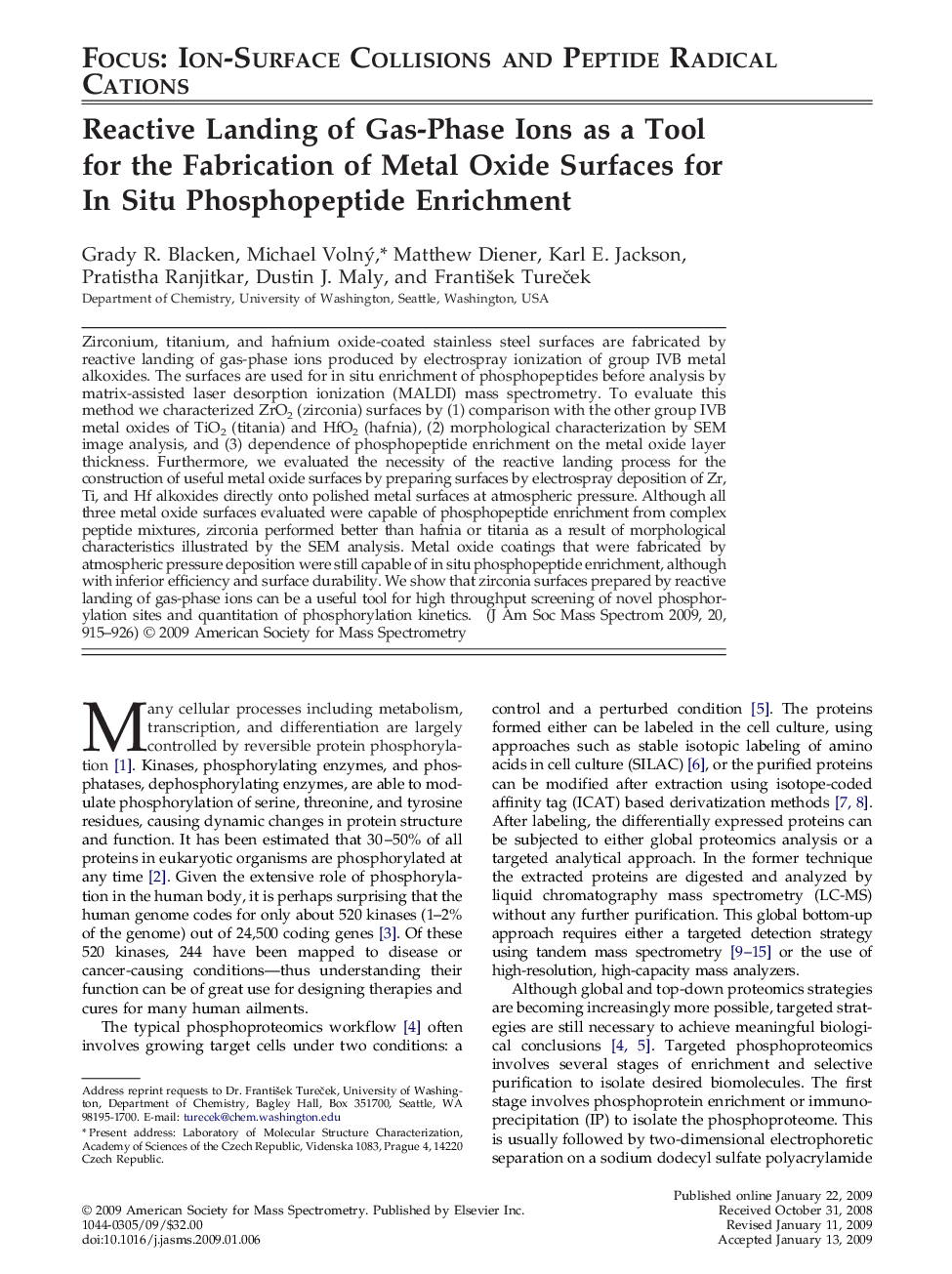| Article ID | Journal | Published Year | Pages | File Type |
|---|---|---|---|---|
| 1195264 | Journal of the American Society for Mass Spectrometry | 2009 | 12 Pages |
Zirconium, titanium, and hafnium oxide-coated stainless steel surfaces are fabricated by reactive landing of gas-phase ions produced by electrospray ionization of group IVB metal alkoxides. The surfaces are used for in situ enrichment of phosphopeptides before analysis by matrix-assisted laser desorption ionization (MALDI) mass spectrometry. To evaluate this method we characterized ZrO2 (zirconia) surfaces by (1) comparison with the other group IVB metal oxides of TiO2 (titania) and HfO2 (hafnia), (2) morphological characterization by SEM image analysis, and (3) dependence of phosphopeptide enrichment on the metal oxide layer thickness. Furthermore, we evaluated the necessity of the reactive landing process for the construction of useful metal oxide surfaces by preparing surfaces by electrospray deposition of Zr, Ti, and Hf alkoxides directly onto polished metal surfaces at atmospheric pressure. Although all three metal oxide surfaces evaluated were capable of phosphopeptide enrichment from complex peptide mixtures, zirconia performed better than hafnia or titania as a result of morphological characteristics illustrated by the SEM analysis. Metal oxide coatings that were fabricated by atmospheric pressure deposition were still capable of in situ phosphopeptide enrichment, although with inferior efficiency and surface durability. We show that zirconia surfaces prepared by reactive landing of gas-phase ions can be a useful tool for high throughput screening of novel phosphorylation sites and quantitation of phosphorylation kinetics.
Graphical AbstractProcedure for in situ phosphopeptide enrichment on a ZrO2-coated MALDI plate.Figure optionsDownload full-size imageDownload high-quality image (129 K)Download as PowerPoint slide
